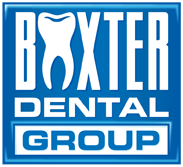Whether you need a tooth extraction, gum graft, or another kind of oral surgery procedure, it’s important that you follow certain steps to ensure a swift recovery. Although every situation and procedure are unique, the same general protocols can be applied. At Baxter Dental Group in Ballwin, MO, we aim to educate each patient on their treatments, so they fully understand what to expect before, during, and after.
General Oral Surgery After Care
Oral surgery refers to any procedure or operation performed on teeth, gums, jaw bones, and surrounding structures of the mouth and face. Although many oral surgery procedures are routine, it’s important not to downplay the recovery process. Taking the necessary precautions allows you to resume your daily routines in a timely manner.
1. Follow Your Dentist’s Instructions
Often, the directions following an oral surgery are relatively easy to follow. In the case of tooth extraction recovery, your dentist will provide a list of postoperative instructions. For example, you’ll likely be directed to keep the site clean, which means rinsing with an antimicrobial mouthwash and avoiding brushing or flossing the affected area. Most patients feel back to normal within a few days if they follow extraction aftercare instructions.
2. Rest
After your oral surgery, plan to spend the rest of your day relaxing. Don’t try to push yourself to clean the house or cook an extravagant meal, even if you feel fine. Any strenuous activity can dislodge the blood clot and cause significant bleeding or dry sockets in some situations. If your surgery requires a sedative, be sure to arrange a ride home.
3. Pain Management
Pain following oral surgery is normal. You may be prescribed antibiotics or pain medications depending on your situation. Otherwise, any over the counter options such as Aleve, Tylenol, or Advil will do the trick. Make sure you follow the directions listed on each medication, so that you take the correct amount and allow enough time before your next dose. Swelling and bruising are also common after various procedures. Repeatedly pressing an ice pack on your jaw for 30 minutes and removing it for 15 can reduce both swelling and pain.
4. Control Your Food Intake
Oral surgery often leaves a wound in your mouth. To protect the area, be sure to only eat soft, cold foods for the first couple of days, and ask your dentist when you can introduce other kinds. Postoperative-friendly foods include yogurt, applesauce, ice cream, and cottage cheese. Avoid hot, chewy, crunchy, or spicy foods until your dentist says otherwise. Additionally, don’t drink through a straw, as the action itself can dislodge blood clots.
5. Attend All Follow-Up Appointments
No surgery is a one-and-done process. Whether you needed an emergency appendectomy or a scheduled dental bone graft, follow-up appointments will be involved. Although it may not be the most convenient, attending your follow-up appointments has great value. Your dentist is capable of identifying issues with your recovery, and determining whether you’re healing normally.
Should there be a problem, they’ll take appropriate action right away as you’ll already be in their office. On the other hand, skipping the follow-up appointments without knowing a problem exists can lead to further issues later. Following the general steps and attending all check-in appointments will help you recover properly.
Common Oral Surgeries
Although the same precautions apply to each oral surgery procedure, the recovery duration differs from one operation to the next. Common oral surgeries include tooth extractions, bone grafts, and gum grafts, among many others.
Tooth Extraction Recovery
The length of recovery following a tooth extraction procedure depends on the severity of each case. However, most patients feel much better after a few days. Although you’ll be able to resume normal routines after 48 to 72 hours, your jaw bone will take much longer to heal. For instance, if the end goal is to receive a dental implant, you’ll have to wait a few months to proceed with the next step.
Dental Bone Graft Recovery
A dental bone graft adds density to your jaw where bone loss has occurred. Whether the replacement material be from your own body or elsewhere, once the graft has been placed, it holds space for your body to regenerate new tissue and heal. As a result, you will most likely feel better after a week or so, but complete healing can take anywhere between three and nine months, or sometimes longer. Timing depends on the type of graft, the area it was placed, and your body’s capacity to heal.
Gum Graft Recovery
When your gums begin receding, your tooth roots are exposed, therefore increasing the likelihood of decay and infection. A gum graft is the common solution, where your dentist will remove healthy tissue from another place in your mouth and attach it to the receding area. You’ll be able to go home shortly after the procedure and will likely feel back to normal after a week. It’s also important not to touch the recovering gums with your finger or tongue, as that increases the risk of infection.
Visit Our Ballwin Dentist for Quality Care
At Baxter Dental Group, our team takes pride in the dental technology and treatments we offer to patients of all ages. We’re dedicated to quality care and comfort during all procedures. It’s our goal to educate patients on the specializations and procedures we provide so that they know what to expect. If you need an oral surgery performed and wish for the highest level of care, we’re your team. Contact our Ballwin dentist office today to schedule an appointment. We look forward to serving you!
